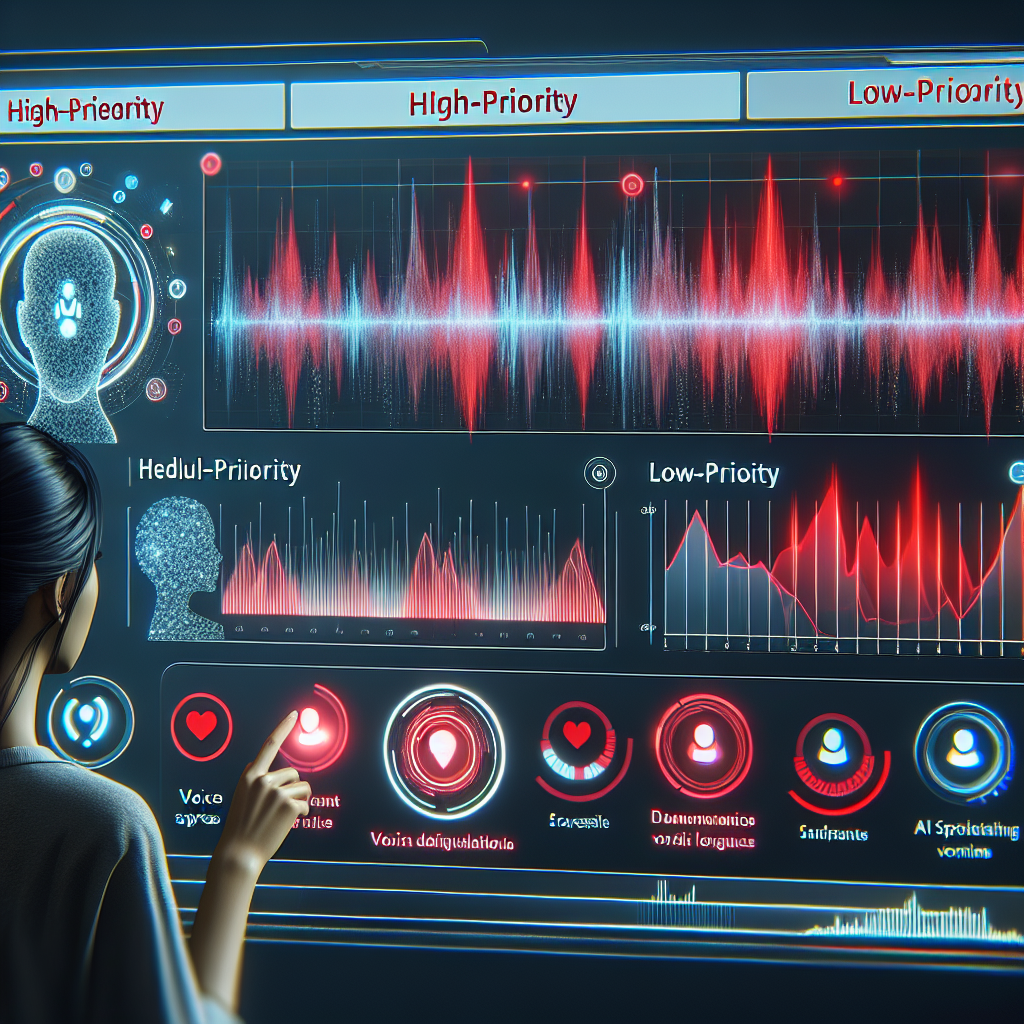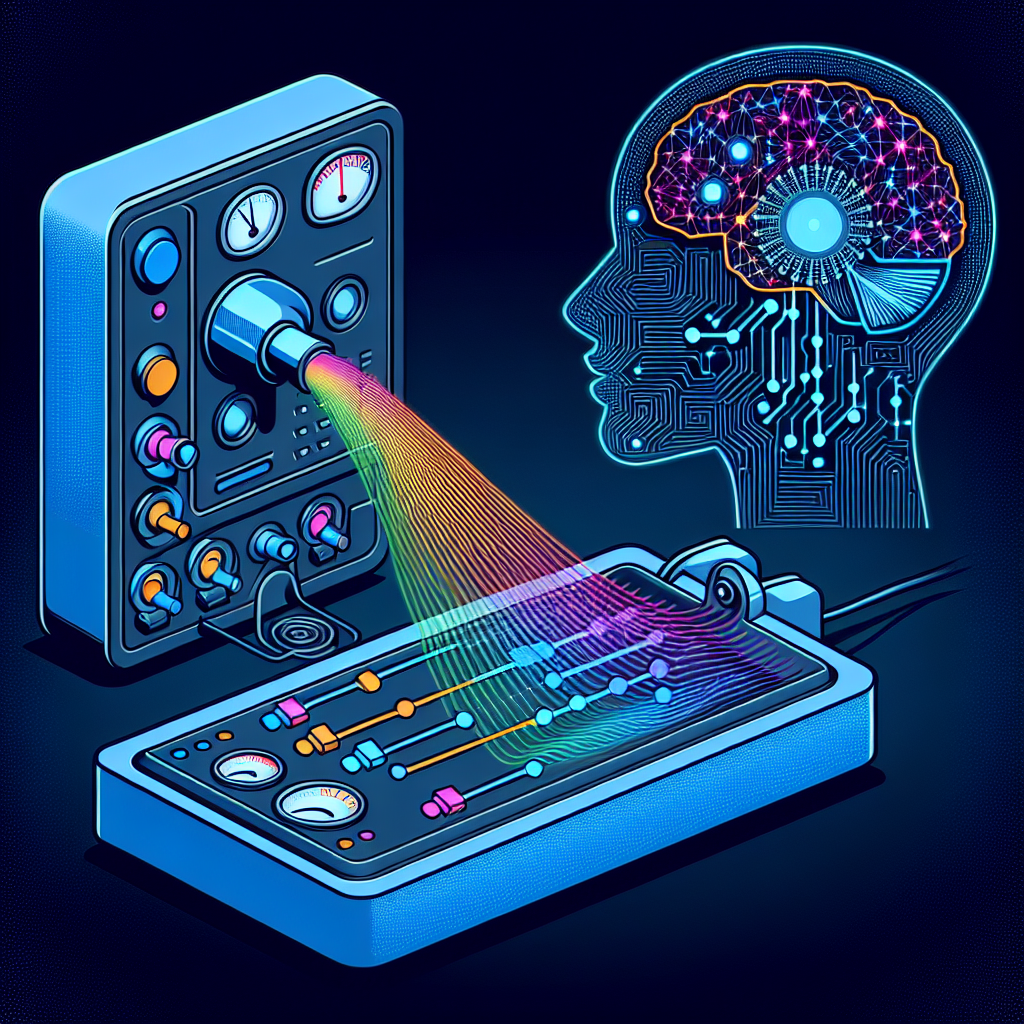
As technology continues to evolve and enrich our daily lives, one forefront of this innovation is Voice Stress Analysis (VSA). Voice Stress Analysis is a cutting-edge technology that uses Artificial Intelligence (AI) to detect and analyze emotional stress levels in a person's speech. It is profoundly transforming the ways industries, especially the customer service sector, handle customer interaction.

By accurately identifying the subtle alterations in one's voice caused by emotional stress, VSA provides an essential tool for detecting urgency and emotions in customer calls. This dramatic leap in communication transforms call center interactions — enabling agents to prioritize calls based on emotional distress cues detected by the AI. This impactful advantage allows businesses to respond more effectively and empathetically to high-priority situations.
This groundbreaking technology is not only limited to call centers but is also being adopted in various other sectors such as healthcare, law enforcement, telecommunication, and more. By leveraging VSA, these industries are able to make more informed and immediate decisions, improving not only efficiency but also the quality of service provided.
The rise of Voice Stress Analysis is a testament to the transformative power of AI, etching a new frontier in the realm of human interaction and communication. As we continue to unravel its full potential, we stand on the threshold of a new era, where AI's understanding of human emotions and urgency can greatly enhance the effectiveness of our communication, ultimately improving our mutual understanding and empathy.
The domain of Artificial Intelligence (AI) has dramatically transformed the communication landscape,especially in the sphere of customer support and emergency services. With the advent of Voice Stress Analysis (VSA), AI tools can now adeptly identify high-priority calls based on varying urgency levels - a breakthrough with far-reaching implications.
Voice Stress Analysis evaluates vocal patterns and physiological changes indicating stress or discomfort, making it an invaluable tool in flagging significant distress calls. This technology harnesses deep learning algorithms to analyze 'stress markers' in a caller's voice. As a result, AI can now determine if a call demands urgent attention even before human intervention.
How does it work? AI utilizes a combination of several indicators such as changes in tune, tone, pitch, inflection, and rhythm of human speech, all of which can reflect emotional stress. For instance, a sudden increase in speech rate or a noteworthy change in pitch, may suggest urgency.
Moreover, the technology enables effective categorization of calls. It intelligently assigns priority levels, predicated on an algorithmic understanding of the stress markers and the severity associated with each. The AI system, therefore, efficiently streamlines workflows by routing high-priority calls to appropriate personnel faster and more accurately, thus optimizing response time and service delivery.
Furthermore, AI training data collates a wealth of information to 'train' these systems. Structured data annotation, which involves marking and categorizing data, aids in refining AI's comprehension of various vocal cues and their corresponding significance. With every call processed, the AI tool learns and adapts, continually improving its capacity to distinguish voice stress markers. Thus, it represents AI's evolution toward cognitive empathy.
In conclusion, by incorporating VSA into AI tools, we are witnessing a transformation in how high-priority calls are determined and managed. As this technology continues to improve and become more integrated into our communication systems, it heralds a future where AI will be indispensable in discerning and responding to human emotional stress.
Seamless integration of voice stress analysis AI with existing business CRM systems and customer service technologies plays a pivotal role in enriching customer interactions and responses. Leveraging this innovative AI technology can optimize workflow efficiencies, enhance response times, and convert routine customer calls into high priority solutions with increased business value. AI and CRM integration is indeed a powerful combination resulting in an enriched Customer Experience (CX).
Tapping into customers' emotional states during live interactions forms the crux of Voice Stress Analysis (VSA). These AI tools scrutinize subtle changes in the voice frequency, analysing fluctuations that may signify stress or discomfort. By linking these AI-infused tools with a CRM system, businesses can gain crucial insights that allow them to identify high-priority calls intuitively and respond with greater efficiency and empathy. The underlining mechanism of Voice Stress Analysis proves to be beneficial in proactively managing customer relationships.

Voice stress analysis AI can also be integrated with several customer service platforms other than CRM, such as call center automation suites. These technologies often feature automated response systems and bots. VSA AI tools can empower these bots to interpret and respond to customer emotions, enhancing the quality of automated services. Further research on this subject manifests its practicality.
In conclusion, integrating voice stress analysis AI into CRM and other customer service platforms can significantly help identify high-priority calls. These systems equip businesses to take on a more empathetic and efficient approach towards their customers. The trajectory of AI and its potent impact on Customer Relationship Management elucidates the future of customer service. AI is indeed revolutionizing the customer service landscape.
Voice Stress Analysis (VSA) is the scientific process of measuring, analyzing, and responding to stress, emotion, and deception in the human voice. It is being integrated into the customer service sector with Artificial Intelligence (AI) tools for triaging high-priority calls. Innovative corporations have unlocked the capability to not just respond to customer interaction, but to prioritize based on the emotional metrics of each interaction.
One such example can be seen in a multinational banking corporation, which successfully integrated an AI-driven voice stress analysis model into their customer service system. By assigning an urgency score based on the vocal stress level of incoming calls, they significantly reduced response times for high-stress callers. For more details on this, navigate to the link provided by the search here.
An equally impressive success story is that of a renowned insurance company. They adopted an AI-powered VSA system to differentiate between genuine and fraudulent insurance claims over the phone, based on the caller's voice stress levels. The system helped in significantly reducing fraudulent claims, thereby saving the company substantial amounts of money. The entire in-depth case study can be found at this search.
Mobile service providers have also benefited from AI-driven VSA. Faced with rapidly increasing call volumes, a global telecom giant used VSA to analyze and rank incoming calls. The AI system prioritized calls from highly stressed and irate customers, transforming their customer service quality. Read here for more particulars about this implementation.
To conclude, Companies who adopted AI-driven voice stress analysis tools have fantastically reshaped the delivery of their customer service, with improved efficiency and customer satisfaction. The growing applicability and success of this technology signal a promising trend in customer service automation, navigating towards a future where AI not only understands what we say but also how we feel.
The voice stress analysis landscape is rapidly evolving and artificial intelligence (AI) has taken center stage in enabling the identification of high-priority calls. This technology automates the monitoring and sorting process in emergency call centers and customer service platforms, allowing for a significant increase in efficiency. As we look forward, we can anticipate many promising trends and enhancements in this sector.

One developing area is the precision of speech emotion recognition, allowing AI to detect subtle emotional cues in real time. These nuanced inferences can pinpoint fear, stress, or distress, helping operators to prioritize calls in emergencies or to improve customer service interactions. AI-driven voice stress analysis is expected to become even more accurate with the continuous advancement of machine learning algorithms.
Another emerging trend is the integration of voice biometric technology. By doing so, voice stress analysis can not only assess psychological stress levels but also verify a caller’s identity. This opens up many potential applications in sectors like security and fraud prevention.
The transformative potential of voice stress analysis AI also extends to global communication strategies. With AI becoming increasingly proficient in understanding human emotions, businesses can harness these insights to offer highly personalized customer experiences. Moreover, crisis communication strategies can be vastly improved as authorities can deploy resources more smartly during emergencies based on the stress levels detected in calls.
In the wake of these extraordinary advancements, it is clear that the future of voice stress analysis AI looks promising. Through refining precision, integrating voice biometrics, and reshaping global communication strategies, this technology is set to become an indispensable tool in our future digital world.
As Voice Stress Analysis technology increasingly thrives in industries such as security, customer service, and emergency response, several challenges persist that warrant attention. The core focus of these technologies is analyzing the human voice to identify stress points and emotions, which potentially categorizes calls into low or high-priority, a process that inevitably raises serious ethical concerns and implementation dilemmas.
The first challenge evident in Voice Stress Analysis is the technology's accuracy. Given that these technologies rely on algorithms that identify stress, factors such as linguistic differences, emotional states, or even illness can trigger false-positive or negative outcomes. Research indicates that AI-based systems are not completely foolproof and, hence, require cautious deployment.
Another significant challenge pertains to the Earth-shattering issue of privacy. To collect data, these systems listen to callers' vocal patterns – a move that, without proper regulations, can lead to intrusive surveillance. As the debate over privacy rights and surveillance intensifies globally, it stands crucial for companies deploying these technologies to establish robust policies that protect users' privacy.
Finally, the ethical implications of these systems cannot be dismissed. The use of AI tools that analyze human emotions might be seen as an invasion of personal space. Additionally, the risk of these systems triggering bias persists – as algorithms are designed by humans, they can inadvertently perpetuate pre-existing biases or stereotypes. Implementing a fair and unbiased system continues to be a daunting task for AI developers.
Therefore, while Voice Stress Analysis tools bring undeniable advancements, their wide-scale deployment should be undertaken carefully. By addressing the associated challenges and harbor respect for ethics, Voice Stress Analysis can truly serve as a high-value tool for identifying high-priority calls while safeguarding individual rights.
Start your free trial for My AI Front Desk today, it takes minutes to setup!








